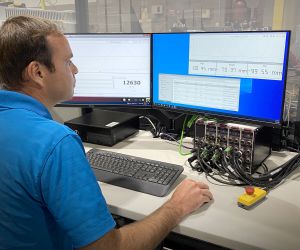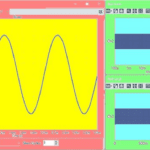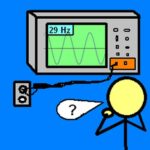The latest version of the Moog Test Controller is more compact than earlier models and meets the different needs of test lab managers without the use of additional hardware. Moog’s engineers have also designed the new controller with an EtherCat bus, which provides the flexibility to meet future developments
and the adaptability for future testing needs.
“We know the resource and capacity needs from lab to lab are quite different,” said Brian Schrameck, key account manager for Moog. “For example, when it comes  to recording sensors, there are almost as many types and arrangements as there are tests, so we designed our latest test controller to meet customers’ needs as a standard product—something they wouldn’t have to modify.”
to recording sensors, there are almost as many types and arrangements as there are tests, so we designed our latest test controller to meet customers’ needs as a standard product—something they wouldn’t have to modify.”
Moog has also created a trade-in program for test lab managers. Depending on the age and type of controller, lab managers can turn in their old Moog test controller, or even a competitor’s model, and receive a new Moog Test Controller at up to 20 percent off the purchase price. “One big difference with our next-gen Test Controller is that the I/O mix per channel is larger,” adds Schrameck.
The Moog Test Controller has a higher I/O density per channel with additional I/O types as standard. The larger mix means test lab managers can monitor more information at a lower cost, with a standard controller. This eliminates buying additional boards to record special signals if a test changes. With the added I/O capacity, if a lab manager was testing a car component and wanted to protect the test area by placing a sensor on a gate and fence, the Moog controller could stop the test if someone inadvertently opened the gate. For a seat test, a lab manager can add displacement sensors without having to add additional I/O cards to the Moog Test Controller.
According to Schrameck, the Moog Test Controller will accommodate the testing of any type of hydraulic or electric application including control arms, suspension systems, even seismic testing for the construction industry and vibration testing on satellites. With the controller’s higher resource density, lab managers get a greater mix of signals on a single board, which makes it easy to add sensors to a test. And if they were to move from testing, say, one car seat to four seats simultaneously, the controller offers the flexibility to upgrade easily. Moog also continuously updates its software suite to add software features to improve efficiency for test engineers.
Moog, Inc, East Aurora, NY 14052-0018, +1 (716) 652-2000, www.moog.com






Leave a Reply
You must be logged in to post a comment.